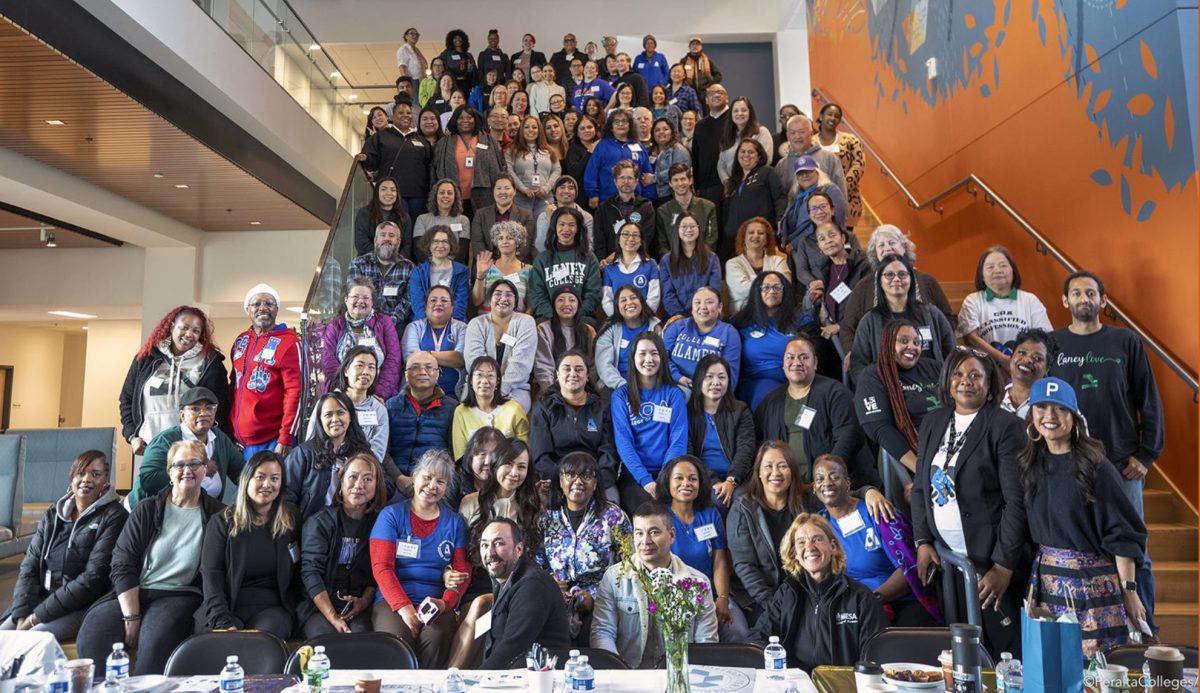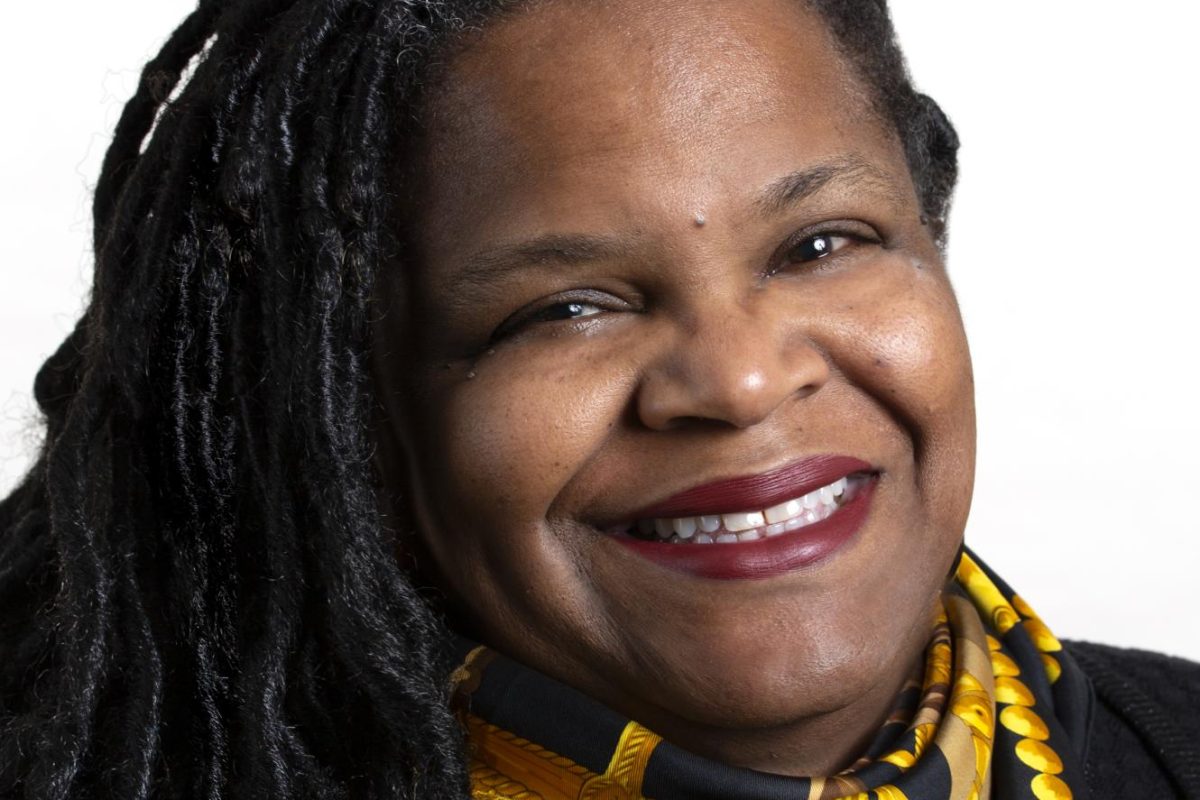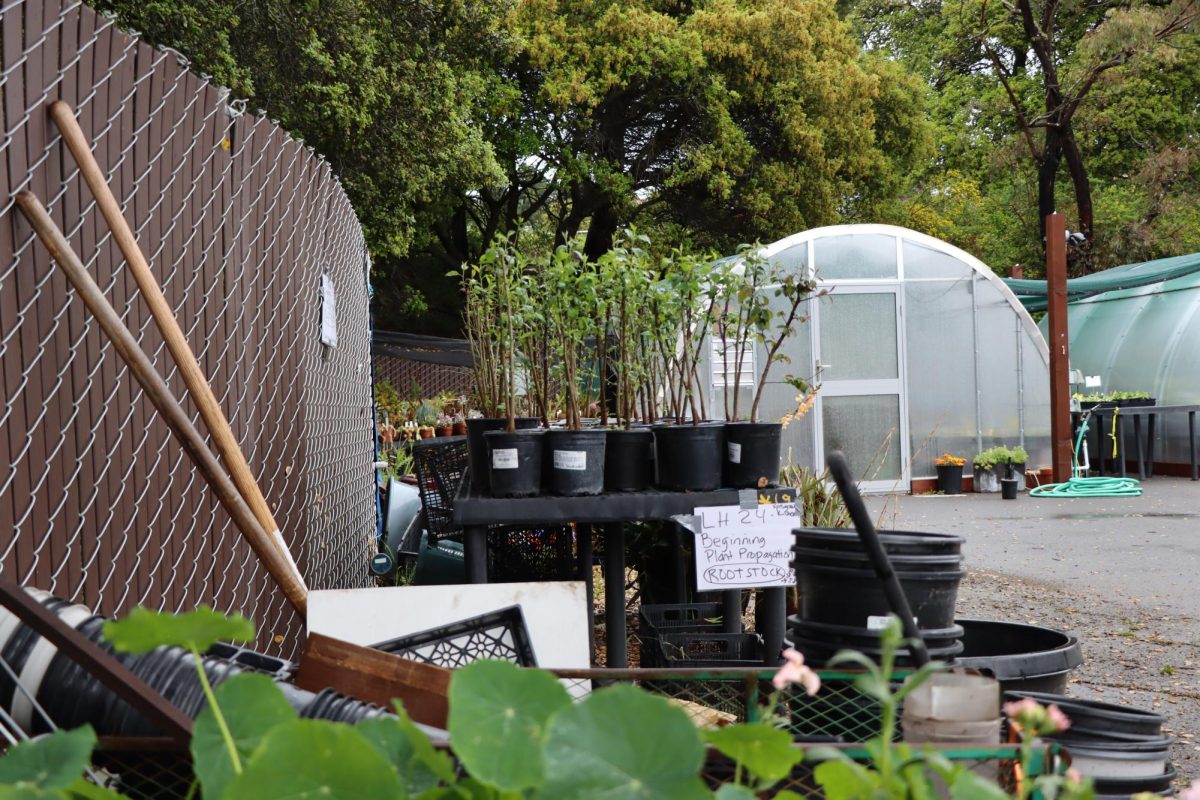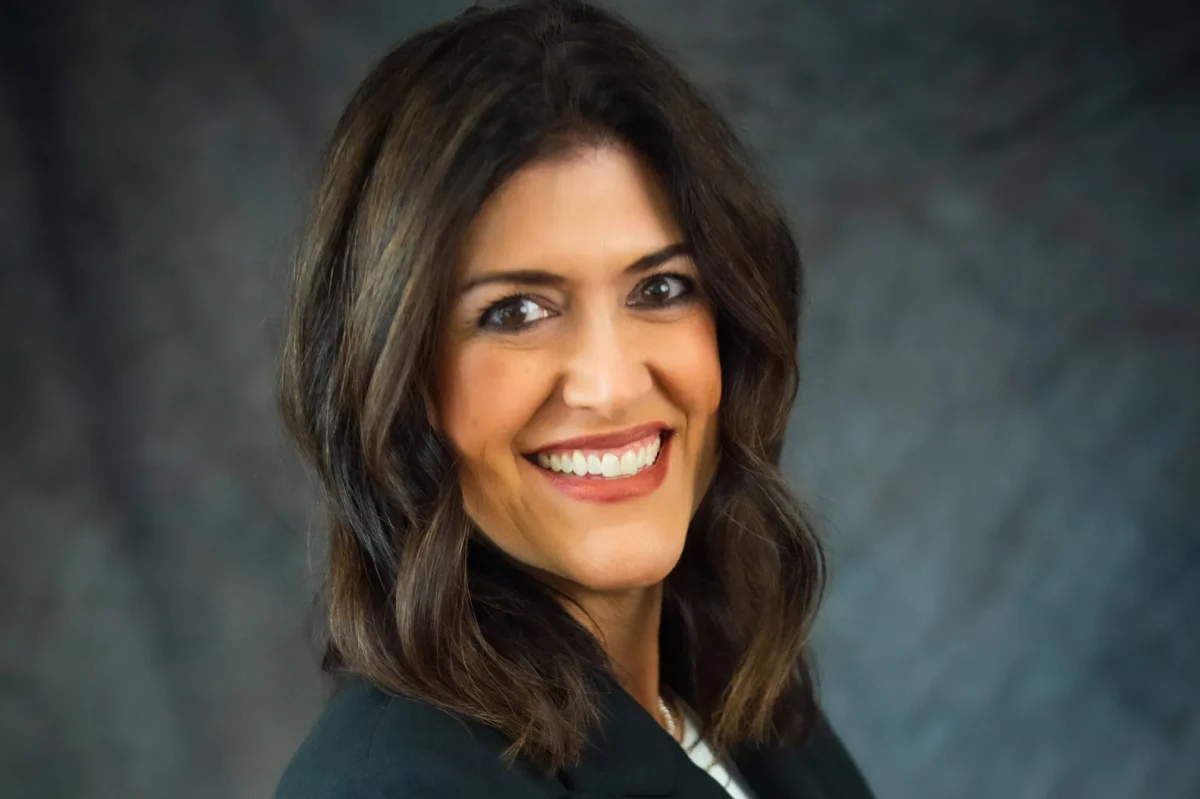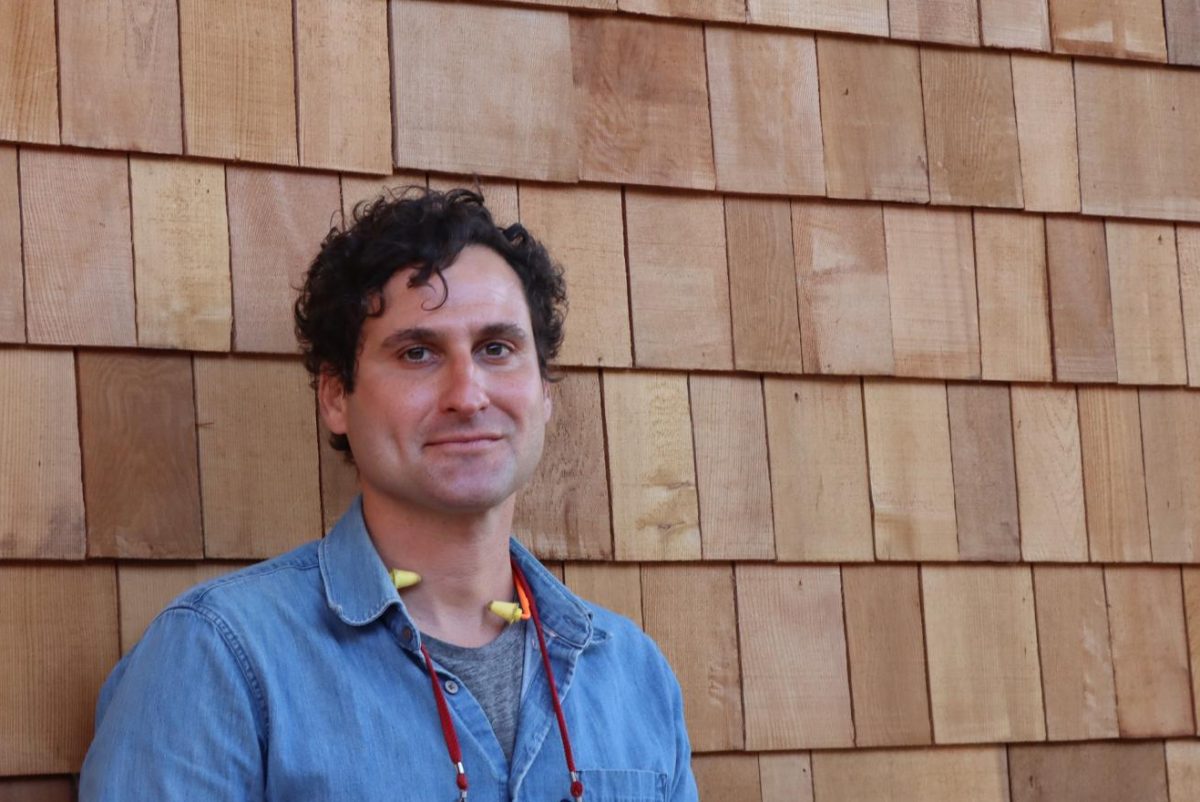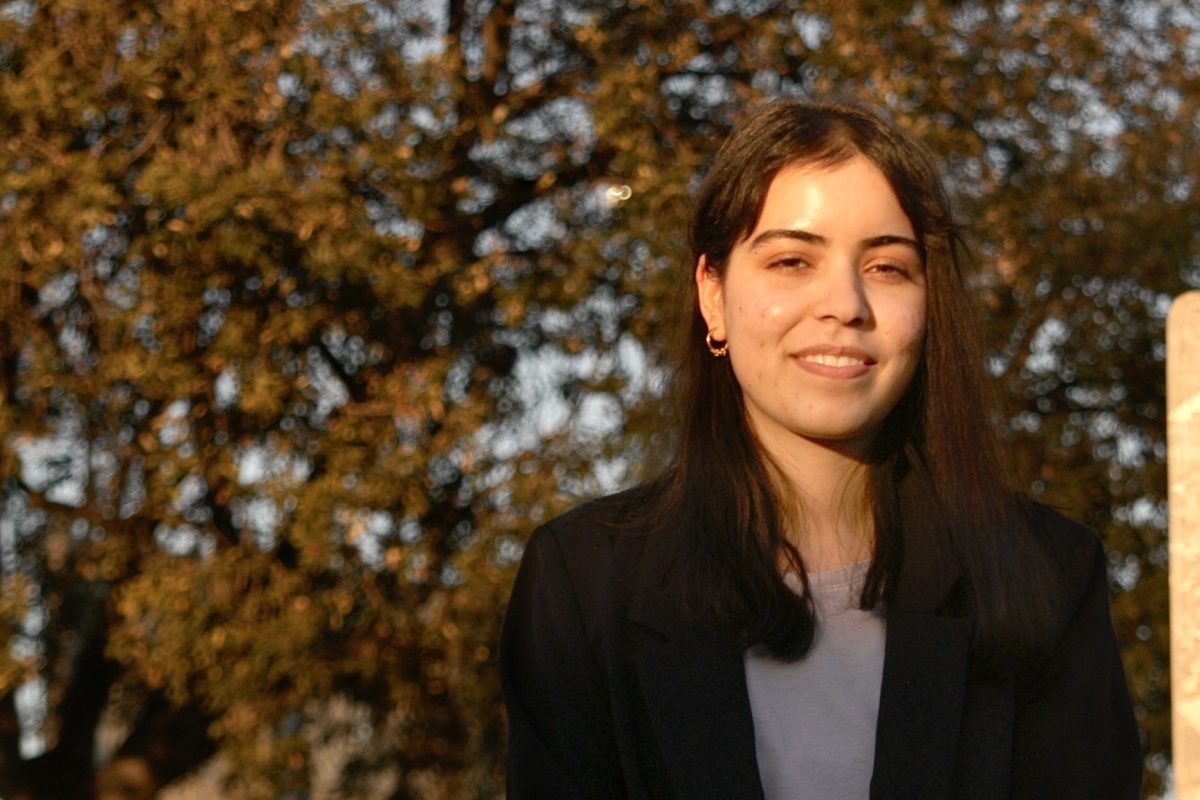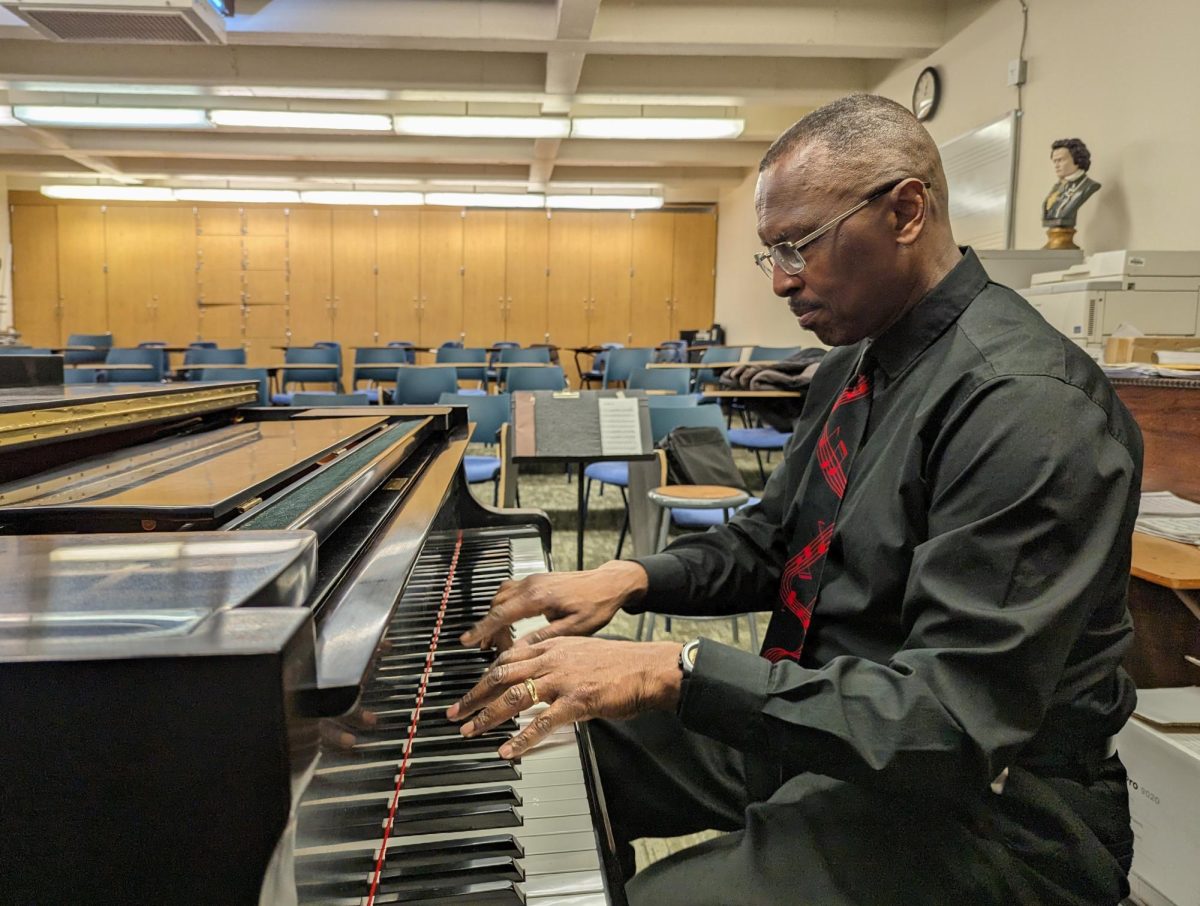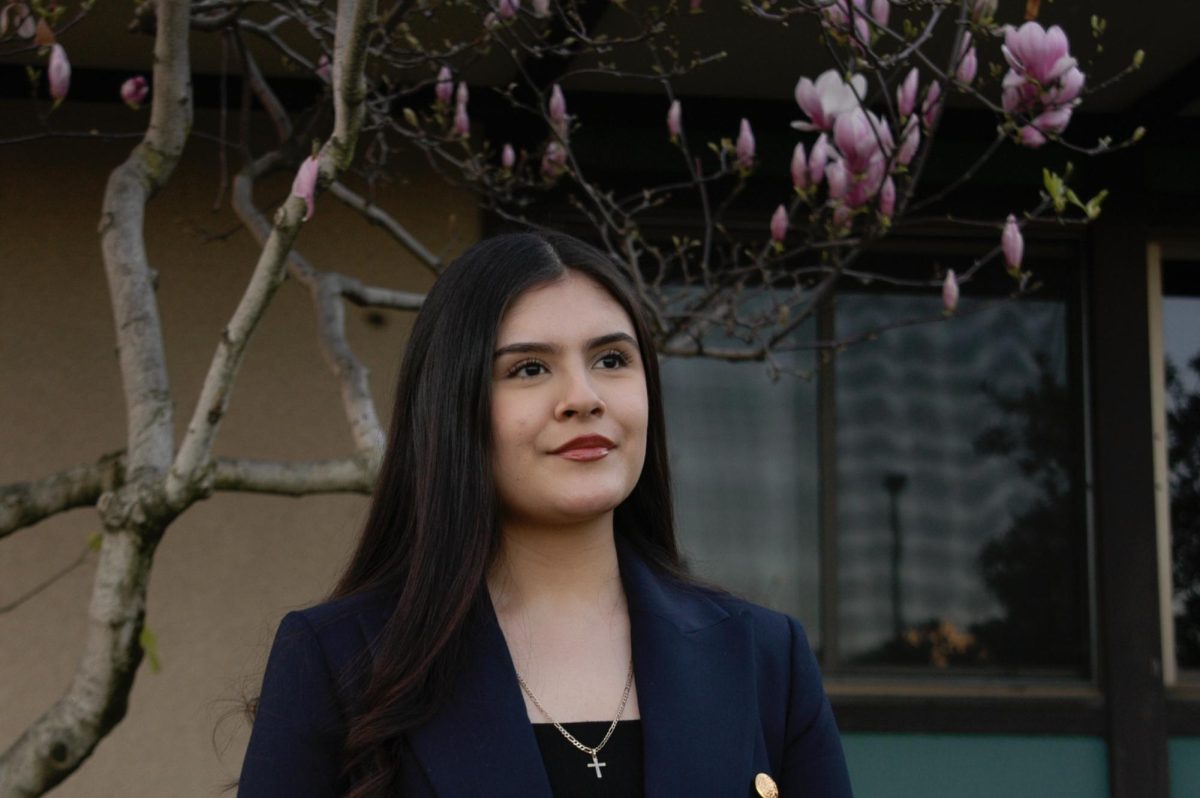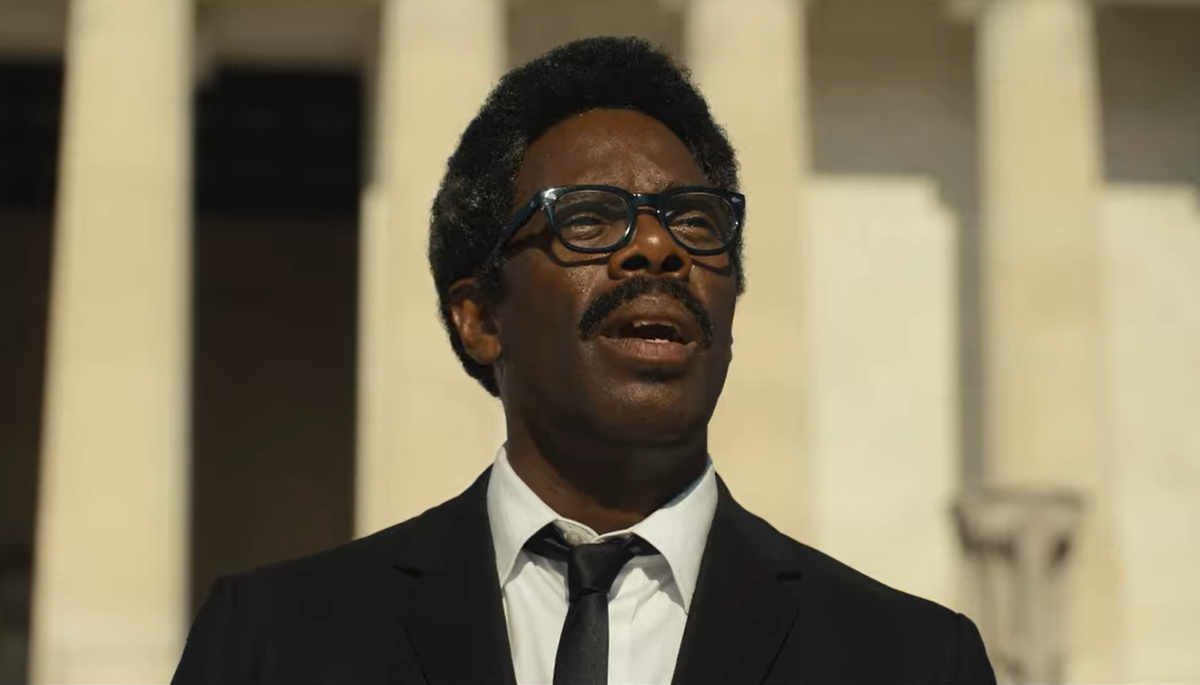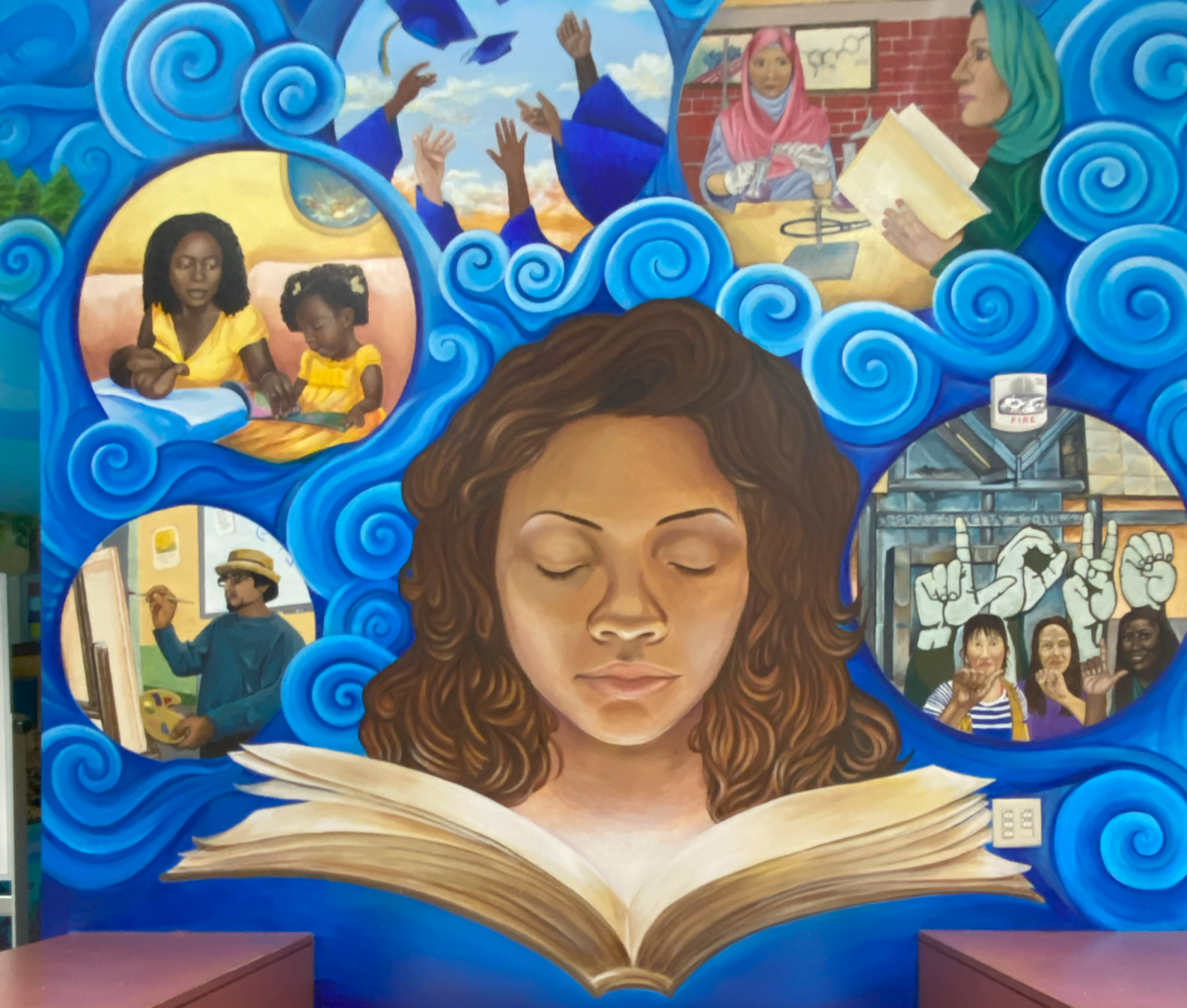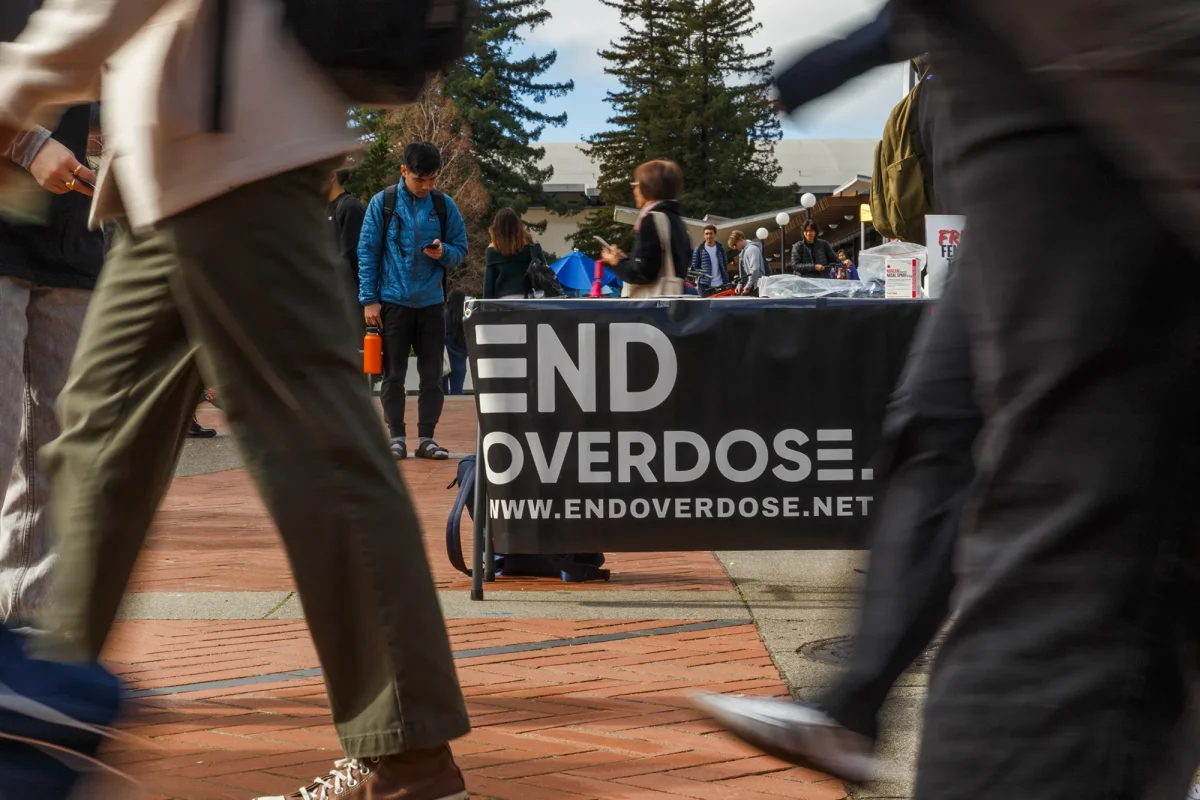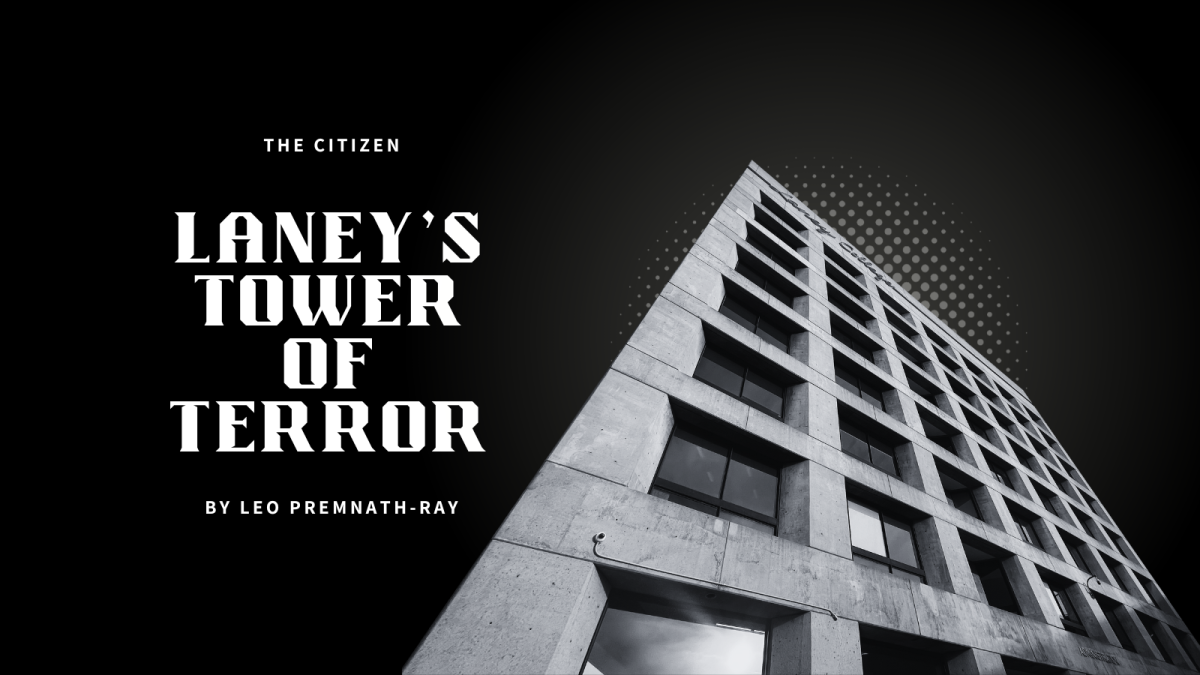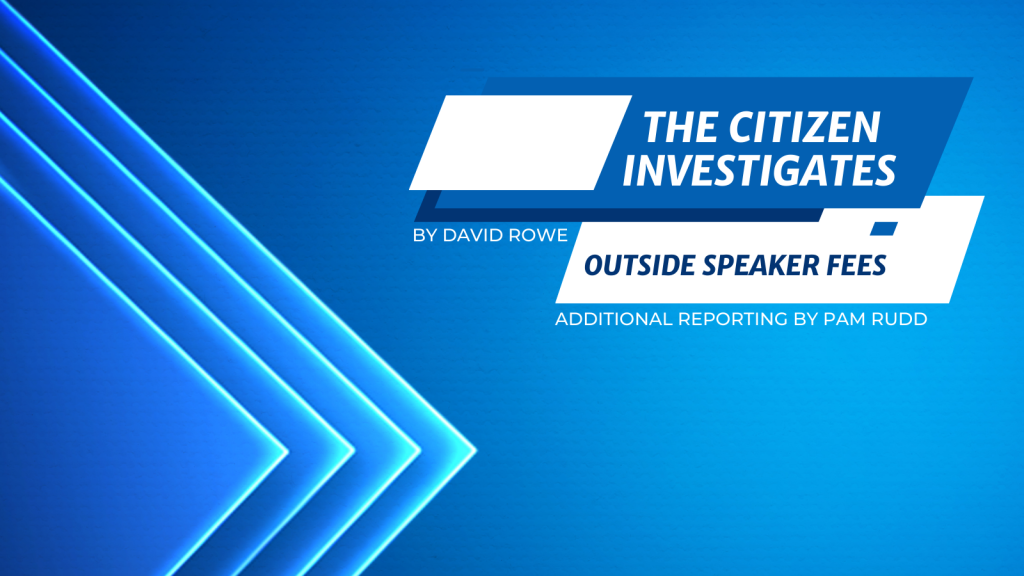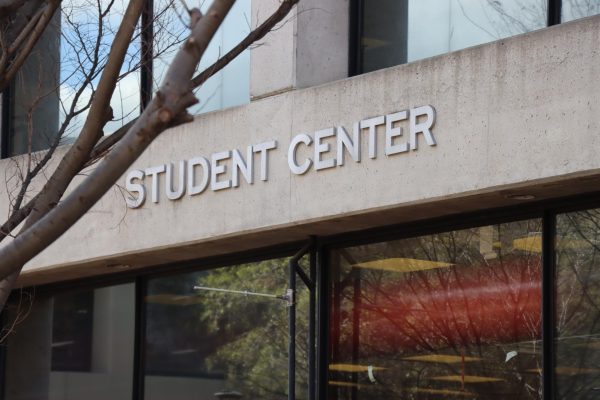B&CTC
Okay to record?
No, that’s fine.
Q: I’d like to ask you some issues…. I was in the carpenters union… From that point of view,
when I look at the owner of the A’s, he is a major gentrifier in San Francisco. Also, I’m assuming
you know Betsy DeVos, or know who she is….
A: (silence)
Q: She’s the secy. of ed. for Trump and Richard Fisher has a long time commitment opposing
public education, which is essentially union busting in the education field and so, I’m just
wondering if for yourself, in the building trades, if those two things are not a concern for you.
A: (inaudible — something about developers) Developers are who they are and given….. We
have to do prehire agreements with developers (inaudible) developers are who they are.
(inaudible, something about depending on developers with a progressive agenda we’d have no
work) Yeah, it’s a concern, but our responsibility is to get work for our members. If the
developers aren’t hiring our contractors, our members aren’t working.
Q: There’s work for our member and there’s work for our members. For example, I don’t know
what was the position of the BTC on that coal facility that Phil Tagami wants to build. Does the
BT support that?
A. I think ____
Calls back….
That’s a very complicated issue. We took a neutral position on that as far as supporting Tagami.
Phil Tagami is one of the most pro-union developers around. In my opinion Phil Tagami as a
business person saw that the city had made a huge mistake and when they signed that
development agreement not banning coal and that was really the city’s mistake and as a result
he’s probably working out a settlement agreement in his favor. I think it’s a much more complex
situation. On the other hand, Phil Tagami is one of the few developers that I trust with a
handshake I know I’m going to have an all union job. He’s done extremely well, better than any
developer on the Oakland Arm base project in terms of local hire and brining in new Oakland
apprentices. Right? So I think things are much more complicated and complex than they seem
to be.
Q: Aren’t there limits as to what the BT should support, what sorts of construction they should
support? Aren’t there limits to that?
A: Oh, yeah, I think we do look at projects and if it’s just an atrocious project with no community
benefits we would not support that. I don’t sign any PLA’s that don’t have strong local hire and
pathways to apprenticeships within them.
Q: I understand as far as local hire, but I’m talking about what is going to be the purpose of the
project. Aren’t there limits?
A: I think you have to look at it on a project by project basis. The answer is ‘yes there are’, but
we take it on a project by project basis. And we have a responsibility to our membership. The
leadership is elected. We’re a democratic institution and so if you are taking positions that is
losing our members work, un, that’s very difficult. If you’re going against a project that is going
to lose a lot of work for your members, you’ve got to be able to convince your membership that
you’re taking a positive position on this and ultimately the membership is going to have to take
the decision.
Q: I talked with a couple of officials from LIUNA
A: Are we having a debate or an interview? Are you taking a neutral position as a journalist? I’m
fine either way.
Q: I guess it’s a bit of both. As you know all journalists have a position, just some of them hide it
and some don’t.
A. Well, I think there’s different schools of thought on that, right? I’d first like to know where
you’re coming from.
Q: As a long time construction worker who’s getting a pension from the carpenters pension plan
and also one who’s been unemployed, I know what it’s like all around. but also as one living in
the general area, and being a student, I’m very much opposed to this project. Number one, I
cannot see how Laney could survive with 10, 15, 20,000 people going to the stadium at the
same time that Laney students are trying to get to class there. And number two, I see it as
almost the final nail in the coffin as far as gentrifying that whole area and gentrifying Oakland in
general. From my point of view, as a union person, I think as that starts to happen that the
unions’ political clout in Oakland will decline drastically.
A: And so what about the 3,000 that are mainly union workers of color that are tied with the
Oakland A’s at the Coliseum. What do we tell those folks? Do we not fight for their jobs?
Q: Of course we have to fight for jobs. But if we are going to make ourselves the slave of the
financiers, then how far are we willing to go with that? If Trump wants to build his wall, and he’s
going to build it union, are we going to support that?
A: It’s two different issues. You’re talking Trump vs. capitalism, okay?
Yes, we are slaves in the capitalist economy to the financiers. They create the jobs.
Private capital creates the bulk of the jobs. And so, can we change it? Do I think a different
system would be better? Yeah. But that’s not where we are and so, as a building trades, we’re
dependent on private financing for our livelihood. That’s a reality. Should we change it? Yeah.
but at this point our membership needs to work. And so, the answer is ‘yes we are. That’s the
nature of the capitalist system.’
The other issue is, okay, yeah, if the A’s are unable to do the project on the Peralta site
there’s a very good chance that they’re going to get up and leave. So the other option is, are
you willing to say let’s publicly finance the project out at the coliseum. Because the A’s can do it
at the coliseum but they would need significant public financing. Above and beyond what
normally would be done? So, are we willing to invest public funds in order to achieve public
policy goals? That’s another question.
Q: From my point of view I would say declare eminent domain, make them publicly owned just
like the Green Bay Packers are and then they are an asset of our entire community, not just an
asset of one of the richest men in the United States.
A: Yeah. That would be the ideal thing. That’s not going to happen.
Q: It’s not going to happen because the political will isn’t there. I’ve done a bit of research into
who the local politicians are and basically they’re all financed by the same financiers.
A, And that’s a reality. And so, let’s not pursue strategies that are unatainable for whatever
reason. Hypothetically, yes, there are a lot of better ways of doing things and a lot of better
ways of organizing business and commerce to be more equitable and more just but that’s not
what’s going to put food on people’s table now. So, you know, again, we got to talk reality and
what we can do. And, um,
Q: So what do you say to the students, teachers and other workers at Laney college who feel
very reasonably that if the stadium goes up, Laney College may be doomed. What do you say
to them?
A: I don’t believe that. I would beg to differ there. I believe that the project is going to be a
windfall for the Peralta system and Laney college. I would say, on those issue, in terms is it in
the best interests of Laney College and the Peralta system, I think that decision is best deferred
to the Peralta board. That’s not my place to say. They’ve hired a very good consultant to that
analysis. And I think that’s their job to do and to make an arrangement whereby they feel they’re
going to benefit. And if they feel they’re not going to benefit from the project, then I would
encourage them not to approve it. That’s a decision that they have to engage in with their
constituents and they have to make that decision.
Q: which consultant were you referring to?
A: Sharon Cornu.
Q: Sharon Cornu talked about putting Laney students to work installing the scoreboard. In other
words, brining in non-union labor.
A: No she did not.
Q: Yes, she did.
A: No, no, no. What we’re talking about with Laney: See right now Laney is currently training
students to put them to work on non-union projects. That’s how Laney’s construction program
works. This actually provides us with the opportunity, finally, to sit down with Laney College and
provide a pathway to union apprenticeship through Laney College. Something that we have not
been able to do for various reasons that I won’t go into. but now we have the opportunity to do
that… She’s talking about taking the Laney students who are in the construction program and
creating a pathway to get into the apprenticeship programs.
Q: Maybe that’s what she meant, but that’s not what she said last night.
A: Well, I disagree. Because we’re deeply involved in that process and we as building trades,
we would never allow…. Currently Laney is training people for our nonunion competition….
Q: If the majority of students, and we all know that elected officials do not always fully represent
those who elect them, if the majority of the students and others at Laney, if they continue to feel
that this is not in the interests of Laney, what are you going to say to them? Then you have the
students and others at Laney at the throats of the building trades. That’s not a good situation.
A: You’ve got to allow the democratic process to work. I’m sorry. You’ve got an elected board
that has the power to make these decisions. The question to ask the board is how are they
going to involve the students and others to be involved in the decision making process. That’s
what they should be doing. Okay? But at the end of the day the decision is: Is the elected
board…. If there’s a big group of students that are against this, then they have to organize to
make it very clear to the elected body that they’re going to be organizing against them. That’s
fair. That’s how we do things. That’s the democratic process. A constituent group is going to be
asserting influence over board members. That’s what happens. And that’s fair and that’s what
should happen. But the students aren’t the ones who should decide. The faculty aren’t the ones
who should decide. The community college serves all people. And the residents from the area
that benefit from the (inaudible), they’re the ones that are going to have to make the decision.
So, I think we need to uphold the… I mean, you’re right. Do elected officials represent the
communities? That’s a deep fundamental conversation, right? But that’s a deep conversation.
but that’s what we’ve got to work with.
Q: There is that concern, for example, we saw with the Dakota Access Pipeline, where the
Native Americans were getting imprisoned, were getting the hell beaten out of them, just like
union organizers used to get in the past and I believe will again, and the building trades wrote to
the governor saying enforce the full letter of the law.
A: What does that have to do with this project?
Q: It… People see these things and they say “aren’t they concerned with anybody other than
their own members?”
A: Well, I think very naive people see that. I’ve been involved in a lot of community coalitions.
I’ve been having very in depth conversations with a lot of our partners about this project and for
somebody that has not been involved, they may see that. But I’m not concerned about the kind
of folks that we don’t have the kind of partnerships with. There are a whole bunch of labor
community coalition tables where these things are being discussed.They’re very difficult
conversations because it’s not just the building trades. It’s going to be the other unions that
represent the 3000 plus workers that are going to be ultimately in a position to, they’re going to
be in agreement with the A’s, and they’re going to be in the same position where, you know…
Our responsibility is to protect the work and the jobs of our members. That’s our responsibility.
And as much as we can, we need to partner with community folks. Like I said yesterday [at the
board meeting, presumably] there needs to be a very strong community benefits agreement on
this.
And if you look at what’s happening, gentrification is not something new to those communities.
The Brooklyn Basin project alone is going to be a massive gentrifyer. But these issues weren’t
issues and the very groups they were part of negotiating the agreement for the Brooklyn Basin.
and I believe that there is a good opportunity here for groups to get first of all the kind of interim
measures that are necessary to protect the residents currently. Because just the announcement
alone has begun to accelerate the process. So you need to take quick measures in terms of
protecting both and then you need strong mitigation efforts and enhance efforts. I think this is a
great opportunity. A lot of the communities that are represented in terms of Chinatown and the
lake and get construction jobs for a lot of those people for this project and for other projects too.
So I think there are some real good opportunities here. And I believe the communities should
organize and the communities should fight hard to get the best benefits plan they can out of this.
And the flip side about this if the community folks are serious about wanting to have the stadium
at the Coliseum, then they need to have discussions with the A’s about what it would take to
have them do it there. Because at the end of the day the A’s have made a business decision
that the Coliseum is probably not a viable place to put a stadium for various reasons. So the
conversation becomes one of what is it going to take. And if the conversation becomes one of
‘what is it going to take’ and if there is a decision to say ‘we need to publicly subsidize the
stadium at the coliseum to make that a viable option, maybe that’s worth doing. Maybe it’s worth
using public funds to prevent the project in the downtown Chinatown area. But you’ve got to
engage. You’ve got to engage the A’s. You’ve got to engage council members on this.
A: Matter and Ross quote somebody from the warriors as saying, ‘look, all these stadium deals
are not about the franchise, it’s about what you can build in the surrounding area.” So it’s not a
matter of whether it’s cheaper to build at the coliseum or across the street from Laney, it’s a
matter of this is extremely valuable potential property for gentrification, for building hotels,
condos, boutique stores and so on. And if you look at the history of John Fisher, you can see
that’s what he’s after.
A. And that’s why you have to protect yourself from that and why you have to reach agreements
to protect yourself from the inevitable development. I mean, gentrification is already happening.
It’s not like suddenly… It’s the biggest problem i Oakland right now. It’s going to happen with the
A’s or without the A’s it’s going to happen. I don’t want to speak on behalf of the community.
That’s not my role. but i do think that you’ve got to be involved in the process for trying to work
an agreement. That would be my advice. Trying to say it’s better to be at the table, as they say,
than to be part of the meal. So I think that a strategy in place where you are really pushing for
protections and benefits from a project like this is important.
Because if the A’s go to the coliseum it’s going to be the same issue. The issue came up when
we were looking at Floyd Gephart, it’s the same issue. These are issues of development and I
think there’s a great opportunity here to work with, you know, council members and policy
makers are going to be coming up with ways to address the issues, and I think the A’s as a
partner have a willingness to really make this work.
And if you’re at the table and these guys are being total idiots, that’s a different story. If they’re
saying “we’re not willing to do this or we’re not willing to do that”, then you rally round, organize,
just say “hey, they’re not willing to invest and buy a lot of the housing and put it into a land trust
or they’re not willing to do the kind of mitigation that they’re not committed to hiring union jobs
with local labor.” Then you organize around that.
And that’s my advice. I’m in no position to tell any community folks what to do. but I think there’s
a strong opportunity. I think, within in the Chinatown community, as you saw yesterday [at the
board meeting], you’ve got to build a certain cohesiveness around capital will always split you
apart. So you’ve got to do some organizing around that. I’m not saying these aren’t difficult
issues, but I’m saying that you’ve got to think about organizing on different levels.
Q: Are you familiar with Tony Mazzocchi? Were you around when he was around?
A. I don’t know Tony.
Q: He was the national secretary treasurer of the Oil, Chemical and Atomic Workers Union.
Back in the late 80s and early 90s he started a campaign for a labor party. And he never pushed
it as far as he could have, but to get back to what we were talking about earlier, when you said
“that’s just not going to happen,” that’s why it’s not going to happen, because the labor
movement continues to depend on these corporate politicians in both the Republican and
Democratic Parties. We saw that when the building trades, the national leaders of the building
trades, had this nice chummy sit-down, this photo op, with Donald Trump of all people.
A. And you may be right.
Q: And we will never be able to do that when we say, “our responsibility is to protect the work of
our members,” as you say, rather than “our responsibility is to the entire working class.”
A: But we’re democratic institutions and structures. And I have seen a lot of business managers
[of different unions] lose their seats for taking different positions. So, I don’t disagree with you
that there has to be a rethinking of the labor movement.

